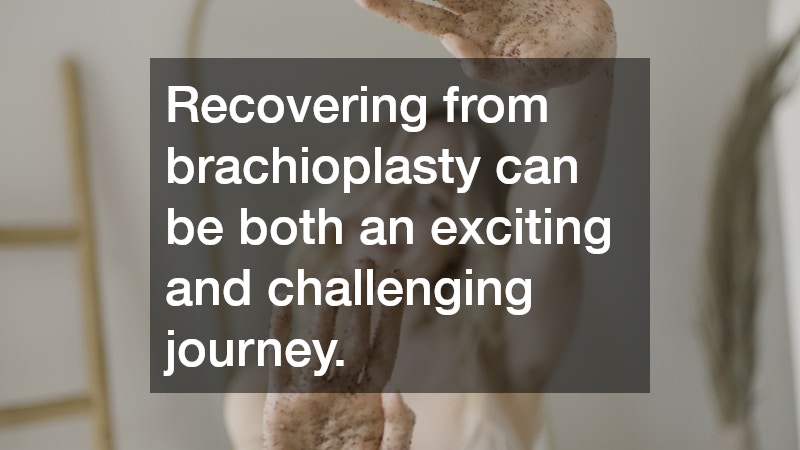Brachioplasty Recovery Guide Tips for a Smooth Healing Process
Brachioplasty, often referred to as arm lift surgery, is a cosmetic procedure designed to remove excess skin and fat from the upper arms. Many individuals who undergo this operation have experienced significant weight loss or aging that has resulted in sagging skin. Understanding the recovery process is crucial for ensuring optimal results and a smooth healing journey. This article will delve into essential tips and guidance for navigating your recovery post-brachioplasty.
Understanding the Recovery Timeline
Recovery from brachioplasty is a gradual process that typically spans several weeks. Immediately after the surgery, patients should expect to experience swelling, bruising, and some discomfort in the arm area. In the first few days, resting and adhering to post-operative care instructions provided by the surgeon are vital for minimizing complications and promoting healing. Most patients will find that they can return to light activities after about one to two weeks, but it’s essential to avoid strenuous exercises or heavy lifting during this period. Understanding your recovery timeline can help set realistic expectations and prepare you for each stage of healing.
The initial recovery phase, approximately one to two weeks, focuses on minimizing swelling and pain management. During this time, your surgeon may recommend using compression garments to support your arms and control swelling. This is also when patients will need to attend follow-up appointments for the surgeon to assess their healing progress. As the swelling begins to reside, typically after the first two weeks, many individuals notice a significant change in their arm contour, which can be motivating and aid in emotional well-being. Being aware of what to expect during this period can alleviate anxiety and encourage a smoother recovery.
After the first week, patients may begin to gradually resume normal activities, but it’s crucial to listen to your body. Many find themselves feeling more like their usual selves, yet it’s important not to rush back into high-intensity workouts or overhead activities for at least six weeks. Full recovery from brachioplasty can generally take about three months, although the final results may take up to a year to fully manifest. Patience and careful attention to your healing process will yield the best results, and keeping an open line of communication with your surgeon will provide additional support. Understanding the recovery timeline can empower you to take charge of your healing journey.
Reviewing Post-Operative Care Instructions
Adhering to post-operative care instructions is critical for ensuring a successful brachioplasty recovery. Patients will be provided with specific guidelines about how to care for the surgical site, manage pain, and recognize signs of complications. Keeping the incision sites clean and dry will help prevent infections, which can significantly delay healing. Possibly, your surgeon may advise about bathing options; you might need to sponge bathe until your incisions heal sufficiently. Following these instructions meticulously can greatly influence your overall recovery experience.
Pain management is also a primary focus during the initial recovery phase. Patients may be prescribed pain medications or advised to take over-the-counter options to manage discomfort. Not adhering to pain management guidelines can lead to unnecessary distress, which may also impact the recovery timeline. Proper hydration and nutrition play essential roles in recovery, ensuring that the body has enough energy and resources for healing. By addressing pain effectively and maintaining a nutritious diet, your body will be better equipped for recovery.
Preparing for Emotional and Lifestyle Adjustments
Undergoing brachioplasty can lead to significant physical changes that may also influence emotional well-being. Many individuals experience a sense of excitement as they start to see improvements in their arm contour, but there can also be periods of emotional ups and downs during recovery. Support from friends and family, or even a support group, can be incredibly beneficial during this transitional time. Understanding that such emotional fluctuations are normal can help prepare individuals for the journey ahead. Acknowledging your feelings and being mindful of your mental health during recovery is just as important as physical healing.
Incorporating gentle exercises, as recommended by your surgeon, can aid in restoring mobility and promoting a healthy mindset. Light stretching and activities approved by a healthcare provider can gradually enhance physical comfort and help counteract stress and anxiety. Digital platforms or local community resources could provide low-impact classes designed for post-surgical patients, offering both physical engagement and social support. Incorporating small, achievable goals into your daily routine will foster a sense of accomplishment as you progress toward a full recovery. Prioritizing your mental and emotional health can make a significant difference throughout the healing process.
Recovering from brachioplasty can be both an exciting and challenging journey. Understanding the recovery timeline, adhering to post-operative care instructions, and taking care of your emotional well-being are all critical elements in ensuring a smooth healing process. By following this recovery guide and maintaining open communication with your healthcare provider, you will be better prepared to embrace your new arm contour and enjoy the confidence that comes with it. Remember, every recovery journey is unique, so take it one step at a time and be patient with yourself during this transformative phase.

